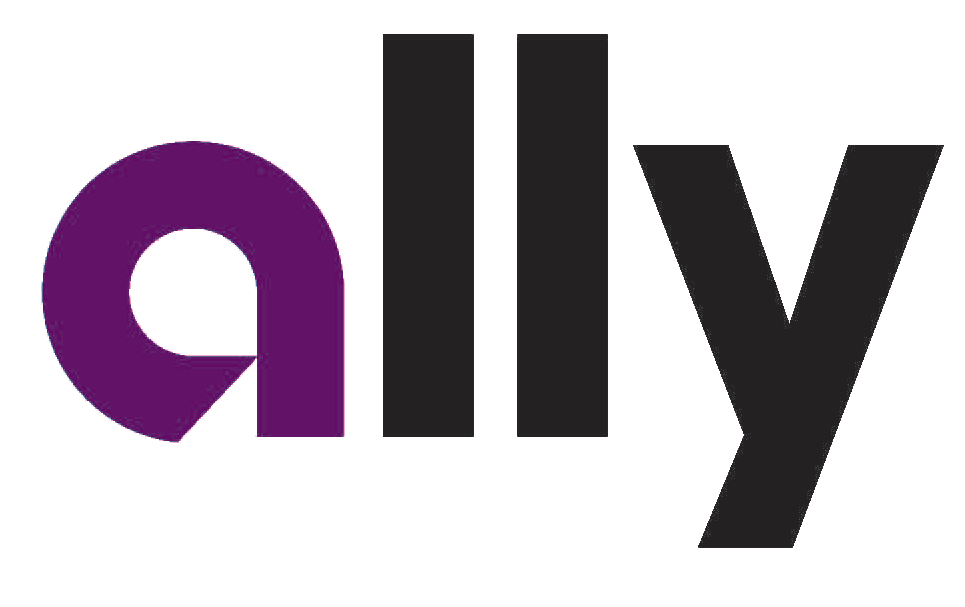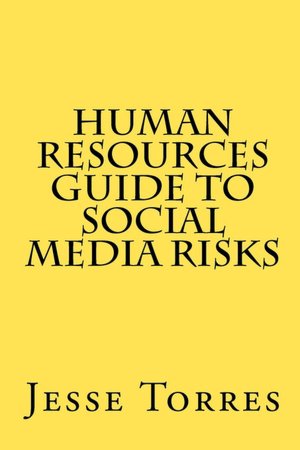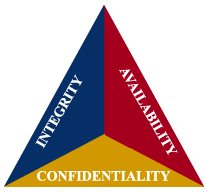Enjoy.
BANK
SOCIAL MEDIA POLICY
Bank recognizes the importance of the Internet in the day-to-day
operations of the Bank. From marketing
to reputation management to recruitment of new employees, the Internet plays in
major role in the Bank’s overall strategy.
And now, the Internet is generally synonymous with social media and its
popular social networks such as Facebook and LinkedIn. Use
of Facebook, LinkedIn, blogging, wikis and other online social media vehicles
are commonplace.
This policy is intended to assist employees in
making appropriate decisions about work-related blogging social media
interaction. This policy must be used in
conjunction with other tools provided to employees, including the Acceptable
Use Policy, Employee Guide to Information Security, Human Resources Guide to
Social Media Risks, and related training.
The
lines between work and personal life can become blurred. In general, what you
do on your own time is a personal decision. However, activities in or outside
of work that affect your job performance, the performance of others, or Bank
business interests are a proper focus for Bank policy.
WHAT THE BANK EXPECTS TO GAIN FROM SOCIAL
MEDIA
As a community bank, Bank recognizes the
importance of our employees joining in and helping to shape conversations
regarding the Bank and the communities we serve. Bank is committed to supporting employees
desire to interact knowledgeably and socially on the Internet through social
media.
Contributing
to the online conversations about banking or our communities means being
present where and when they are taking place. As technology tools enable an
easy exchange with community members, governmental representatives, clients,
and the public, we encourage employees to share the insights and expertise
gained through work at Bank. This can be done without first asking permission
provided this guidance is read and followed.
“TARGET” OF THE BANK’S SOCIAL MEDIA EFFORTS
The
Bank’s social media efforts are targeted at several stakeholders:
1.
Existing
Customers:
To provide existing customers with information and
conversation/engagement opportunities relative to ongoing activities at the
Bank and in the community. Ultimately,
the goal is to convert a “customer” into an “evangelist” for the Bank.
2.
New Customers: To create sufficient
awareness in the local marketplace that results in new customer originations –
deposit, lending, and other services.
The marketplace is full of competitors with similar “commodity” products
and services. Social media allows the
Bank to “humanize” itself and set itself apart from the competition.
3.
Media: Social media
provides the Bank with a platform to communicate with the media regarding its
ongoing activities and rich history.
Through social media the Bank can embed video and other media that can
assist the media when developing content.
For example, a bank video can be reposted and potentially result in
viral distribution.
4.
Regulatory
Agencies:
Social media provides a channel through which the Bank can highlight
compliance with regulatory requirements.
For example, social media allows the Bank to easily demonstrate its
compliance with the Community Reinvestment Act.
Further, social media provides a convenient mechanism through which to
receive consumer complaints or positive feedback.
5.
Community
At-Large:
Social media introduces Bank to the community at-large. The content created on social media provides
an information distribution channel through which interested parties can learn
about Bank.
EMPLOYEE ACCOUNTABILITY
Being
able to share your and the Bank’s activities without prior management approval
means the Bank trusts you to understand that by doing so you are accepting a
higher level of risk for greater rewards. Each Bank employee is personally
responsible for the content he or she publishes on any form of social media. Be
thoughtful about how you present yourself in online social networks.
You
may have identified yourself as a Bank staff member or the Bank as your
employer, either directly or as part of a user profile. If so, ensure your
profile and related content is consistent with how you wish to present yourself
to the Bank’s stakeholders, your business contacts, and your colleagues and
peers.
Senior
management have special responsibility with their Internet presence by virtue
of their high profile position within the Bank, even if they do not explicitly
identify themselves as being affiliated with the Bank. Such senior level staff should assume that
his or her posts will be seen and read by Bank stakeholders and that they will
presumptively associate such posts with the Bank.
Trust
is an essential ingredient in the constructive culture we are striving to
achieve at the Bank. We can’t be there to guide every interaction, so we expect
you to follow these guidelines and advice to help you better balance the risk
vs. reward ratio.
SOCIAL MEDIA OVERSIGHT
The Social Media Manager is responsible for
managing the Bank’s social media strategy.
The Social Media Manager, or an assignee, will provide training and
monitor activity on an ongoing basis.
Inquiries regarding the Bank’s social media strategy must be forwarded
to the Bank’s Social Media Manager.
The Social Media Manager is responsible for
determining “community managers.”
Community managers are employees and third parties that are provided
with authority to act as administrators on the Bank’s behalf. The Social Media Manager must select
individuals as community managers that possess the requisite technical skills
as well as understand the risks associated with social media. All community managers report directly to the
Social Media Manager relative to matters related to social media – regardless
of their role within the Bank.
GENERAL GUIDELINES
These guidelines will help you open up a
respectful, knowledgeable interaction with people on the Internet. They also
protect the privacy, confidentiality, and interests of the Bank and its
customers. Note that these policies and
guidelines apply only to work-related sites and issues and are not meant to
infringe upon your personal interaction or commentary online. Regardless, all employees must determine the
potential impact that “personal” interactions may have upon the Bank and its
customers, vendors, and other stakeholders. Ultimately, employees are held
accountable for ensuring that interaction is appropriate and consistent with
this policy and other Bank guidance.
·
The goal is to ensure the Bank’s voice
is part of the larger conversation relating to community banking and the communities
the Bank serves. Do not embark before
understanding the conversation. First, explore the topic being discussed, read
about it and contribute only when input adds or advances the discussion.
Include an especially relevant link, since doing so further connects the Bank
to the wider Web and can result in greater connectivity for the Bank.
·
Keep in mind that posts are visible
by all with online access. It may be fine to share your work at the Bank as
part of your participation in the online community, etc., but you DO NOT have
permission to reveal any information that compromises Bank policy or public
positions. By that we mean don’t share
anything that is proprietary and/or confidential to the Bank. For example, it
is not okay to share any content that required a non-disclosure agreement or is
part of a confidential management or Board discussion. Other items that may not be disclosed include
any customer and vendor information that is not publicly available.
·
If you are developing
a Web site or writing a blog or making any other social media comment that will
mention Bank and/or our current and potential products, employees, partners,
customers, and competitors, identify that you are an employee of Bank and that
the views expressed on the blog or Web site are yours alone and do not
represent the views of Bank.
·
Unless given
permission by your manager, you are not authorized to speak on behalf of the Bank,
nor to represent that you do so.
·
If you are developing
a site or writing a blog or making any other social media comment that will
mention our company and / or our current and potential products, employees,
partners, customers, and competitors, as a courtesy to the company, please let
your manager know that you are writing them. Your manager may choose to visit from time to
time to understand your point of view.
·
You may not share
information that is confidential and proprietary about the Bank or its
customers. This includes information about upcoming product releases, sales,
finances, number of products sold, number of employees, Bank strategy, and any
other information that has not been publicly released by the company. These are given as examples only and do not
cover the range of what the Bank considers confidential and proprietary. If you
have any question about whether information has been released publicly or
doubts of any kind, speak with your manager before releasing information that
could potentially harm the Bank, or our current and potential products,
employees, partners, and customers. Before embarking on any such endeavor
employees should be familiar with the Bank’s other applicable policies,
including the Acceptable Use Policy, Employee Guide to Information Security,
etc.
·
Bank logo and
trademarks may not be used without explicit permission in writing from the Bank.
This is to prevent the appearance that you speak for or represent the company
officially.
·
Speak respectfully
about the Bank and our current and potential employees, customers, partners,
and competitors. Do not engage in name
calling or behavior that will reflect negatively on the Bank's reputation. Note
that the use of copyrighted materials, unfounded or derogatory statements, or
misrepresentation is not viewed favorably by the Bank and can result in
disciplinary action up to and including employment termination.
·
The Bank encourages
you to write knowledgeably, accurately, and using appropriate professionalism.
Despite disclaimers, your Web interaction can result in members of the public
forming opinions about the Bank and its employees, partners, and products.
·
Honor the privacy
rights of our current employees by seeking their permission before writing
about or displaying internal company happenings that might be considered to be
a breach of their privacy and confidentiality.
·
You may not sell any
product or service that would compete with any of the Bank's products or
services without permission in writing from the Chief Administrative Officer. This includes, but is not limited to training,
books, products, and freelance writing. If in doubt, talk with your manager or
the Chief Administrative Officer.
·
Recognize that you are
legally liable for anything you write or present online. Employees can be
disciplined by the Bank for commentary, content, or images that are defamatory,
pornographic, proprietary, harassing, libelous, or that can create a hostile
work environment. You can also be sued by Bank employees, competitors, and any
individual or company that views your commentary, content, or images as
defamatory, pornographic, proprietary, harassing, libelous or creating a hostile
work environment.
·
Media contacts about the
Bank and our current and potential products, employees, partners, customers,
and competitors should be referred for coordination and guidance to the Chief
Administrative Officer. This does not specifically include your opinions,
writing, and interviews on topics aside from the Bank and our current and
potential products, employees, partners, customers, and competitors.
·
Make sure that your online
activities do not interfere with your job performance.
·
Respecting differences, appreciating
the diversity of opinions and speaking or conducting yourself in a professional
manner is expected at all times. If you aren’t completely confident about what
you intend to share, you should seek management input before you post.
HOW WILL SOCIAL MEDIA BE IMPLEMENTED AT THE
BANK
The
Social Media Manager of the Bank is accountable for determining the Bank’s
Social Media Strategy. The Bank’s use of
social media is largely to develop a “community” of Bank supporters and to
raise awareness of the Bank’s brand.
This is largely done through interaction on mainstream social media
platforms such as Facebook, LinkedIn, Blogger, and Twitter. The specific platforms used may change from
time to time as technology evolves and audiences shift. Regardless, the
guidelines above remain in effect.
Questions regarding the Bank’s use of social media should be directed to
the Social Media Manager.
TYPES OF BANK ACTIVITIES/POSTINGS
The
primary purpose of the Bank’s social media activities is “community
building.” While the Bank will from
time-to-time promote products and services, the primary focus is the creation
of an online community where the Bank can share its history and mission and
where stakeholders can maintain conversations with the Bank. The Bank does not “censor” comments made by
third parties and only removes comments if they are considered obscene,
pornographic or similarly inappropriate.
As such, it is the Bank’s policy to remain transparent and not delete
derogatory comments. Instead, it is the
Bank’s policy to attempt to understand the origin of any derogatory comment in
an attempt to “correct” any error or misunderstanding caused by the Bank. Management is responsible for monitoring
content on an ongoing basis (generally daily).
The
Social Media Manager is responsible for determining “community managers” given
authority to post on behalf of the Bank.
The Social Media Manager is responsible for ensuring that such employees
are “social media savvy” and understand social media risks.
TYPES OF SOCIAL MEDIA USED BY BANK
Currently
the Bank utilizes Facebook, Youtube, Blogger, LinkedIn, and Twitter. These platforms provide for varying types of
interaction. Some are more information
based such as LinkedIn. Others are more
collaborative, such as Facebook.
Currently the Social Media Manager is responsible for managing these
accounts.
OTHER FORMS OF SOCIAL MEDIA
Regardless
of any organization’s use of social media, Internet users can make comments
that affect the Bank on locations outside of the Bank’s social media
sites. As such, the Bank utilizes Google
Alerts and SocialMention.com to monitor (listen) to conversations in social
media and on Web sites that may affect the Bank. Such reports are delivered directly to the Social
Media Manager on an ongoing basis. The Social
Media Manager is responsible for determining appropriate action, if any.
TRAINING
On
at least an annual basis the Bank will provide social media training to all
personnel. The training is intended to
convert employees into social media evangelists while ensuring safe and sound
use of social media. Compliance with the
guidelines noted above will largely ensure that employees act in a manner
consistent with Bank expectations.
AUDIT
The
Bank’s social media activities will be audited as part of the Bank’s normal
internal audit schedule. Auditors will
audit as appropriate. For example,
audits related to IT, consumer compliance, fair lending and CRA may all contain
a social media component.


























